#Tessho Genda
Explore tagged Tumblr posts
Text
you were expecting Optimus Primal but it was me
#jjba#jojo's bizarre adventure#transformers#transformers rise of the beasts#dio brando#optimus primal#mp#dio posts#jojo no kimyou na bouken#jojo#takehito koyasu#koyasu takehito#ai fairouz#tessho genda#gendo tessha
101 notes
·
View notes
Text
PROJECT A-KO:
Invincible teen
Tried to get to school on time
Stopped by sci fi tropes
youtube
#project a ko#random richards#poem#haiku#poetry#haiku poem#poets on tumblr#haiku poetry#haiku form#poetic#anime#Miki ito#Emi shinohara#Michie Tomizawa#Julia Braams#Tessho Genda#Katsuhiko Nishijima#Shigeru Morikawa#Yuji Moriyama#Tomoko Kawasaki#Kazumi Shirasaka#Youtube
1 note
·
View note
Text
"Let's Morphin'☆Drawin'", from Tokumei Sentai Go-Busters (2012). Performed by Sakurada Rika (Yoshiki Risa), with Red Buster/Sakurada Hiromu (Suzuki Katsuhiro), Cheeda Nick (Fujiwara Keiji), Usada Lettuce (Suzuki Tatsuhisa), and Gorisaki Banana (Genda Tessho).
#Tokumei Sentai Go-Busters#Go-Busters#Super Sentai#Yoshiki Risa#Suzuki Katsuhiro#Fujiwara Keiji#Suzuki Tatsuhisa#Genda Tessho#Character songs
2 notes
·
View notes
Text
UPDATE: I changed the fan cast seiyuu of Smokescreen from Okitsu Kazuyuki to Uchiyama Kōki, I also have added and changed the image of some characters bc I have free time lol

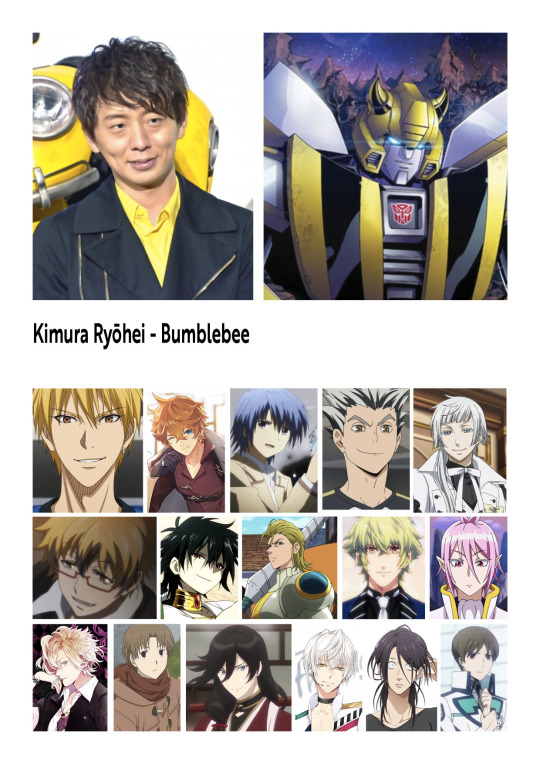
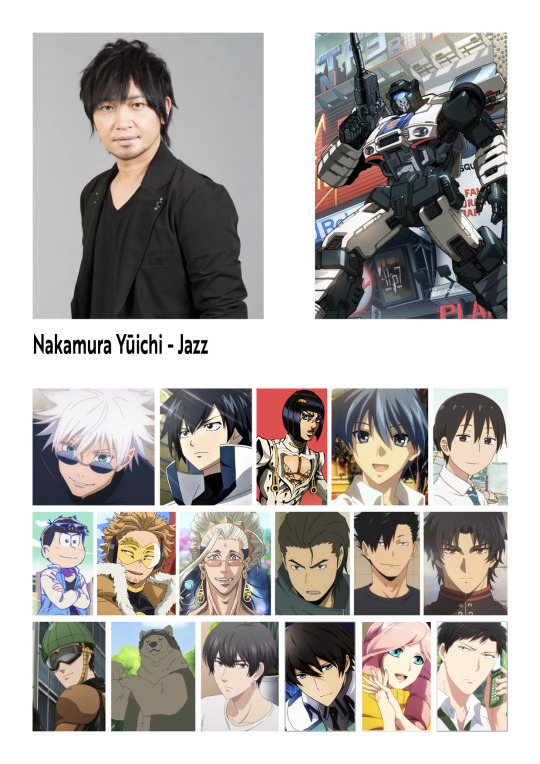
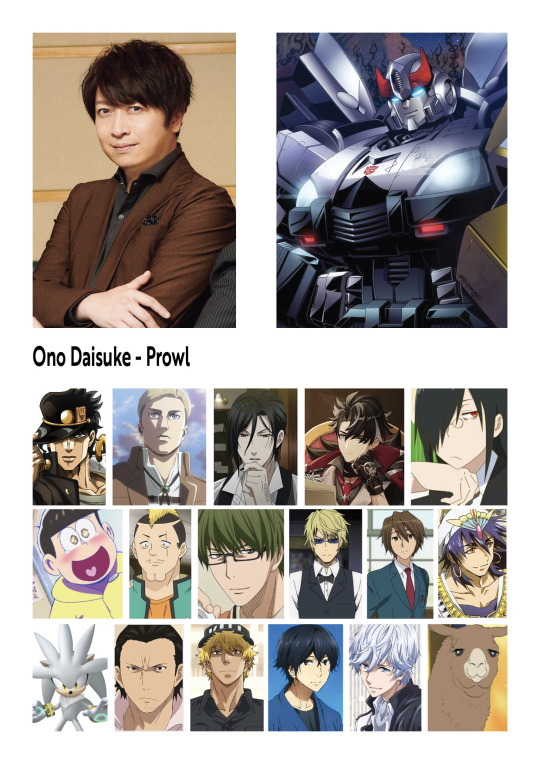

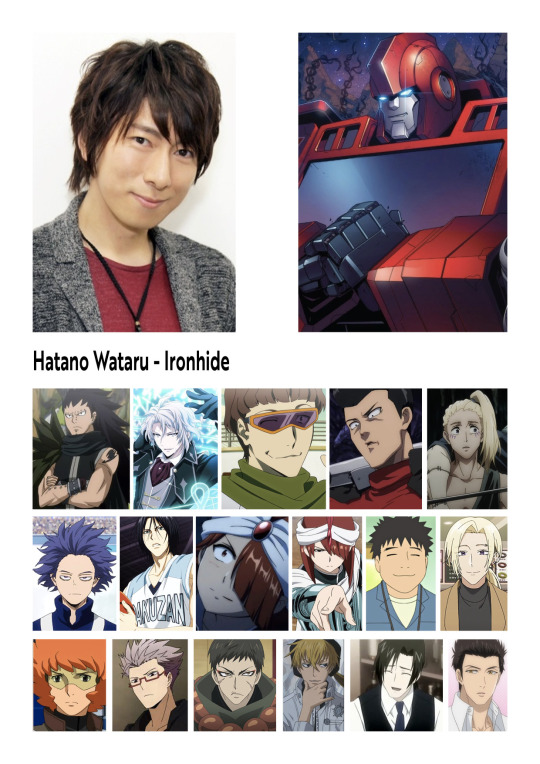


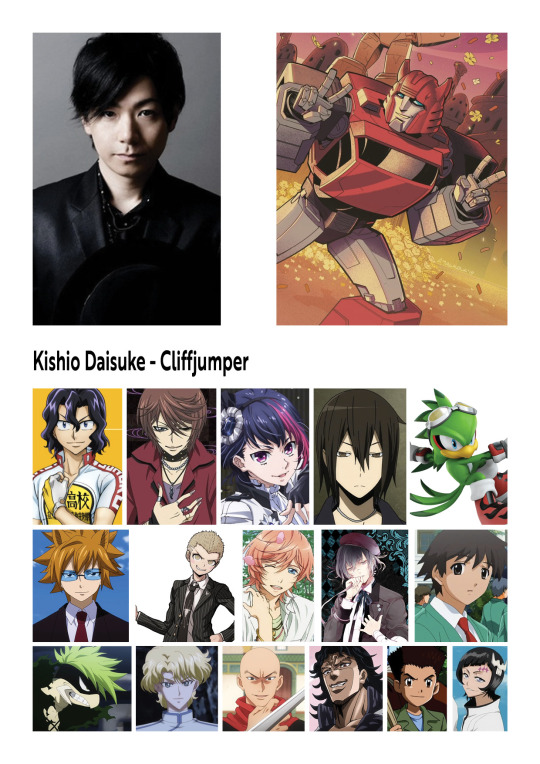




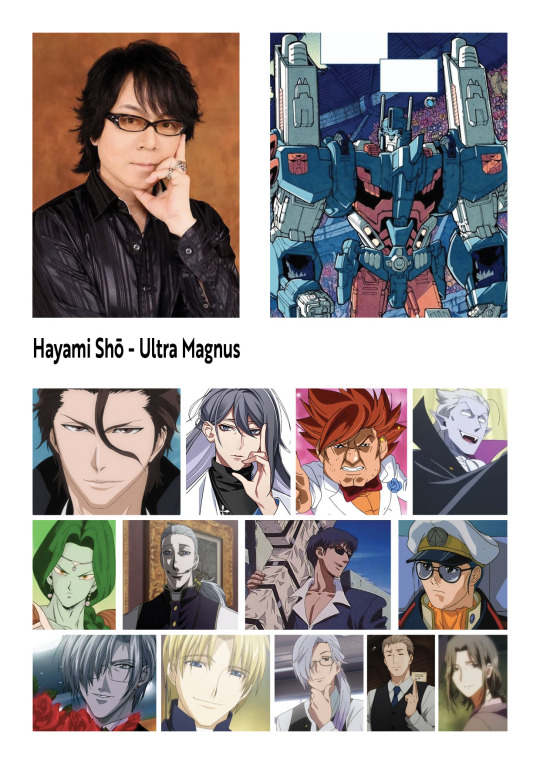

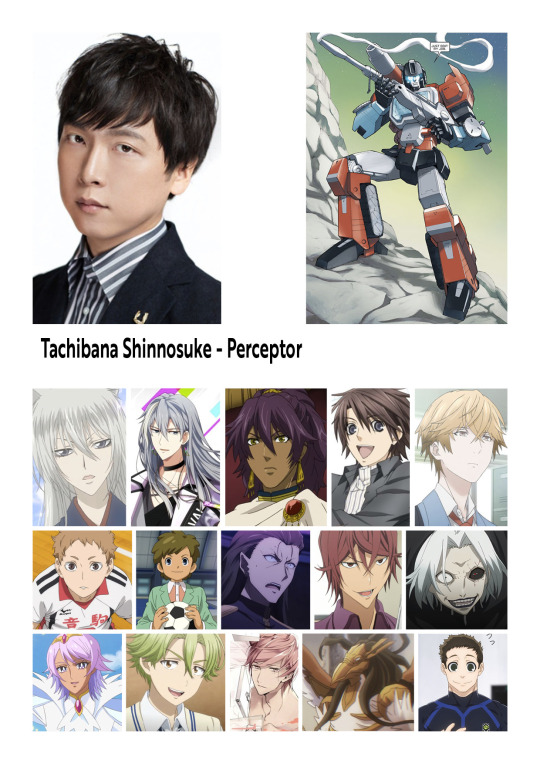


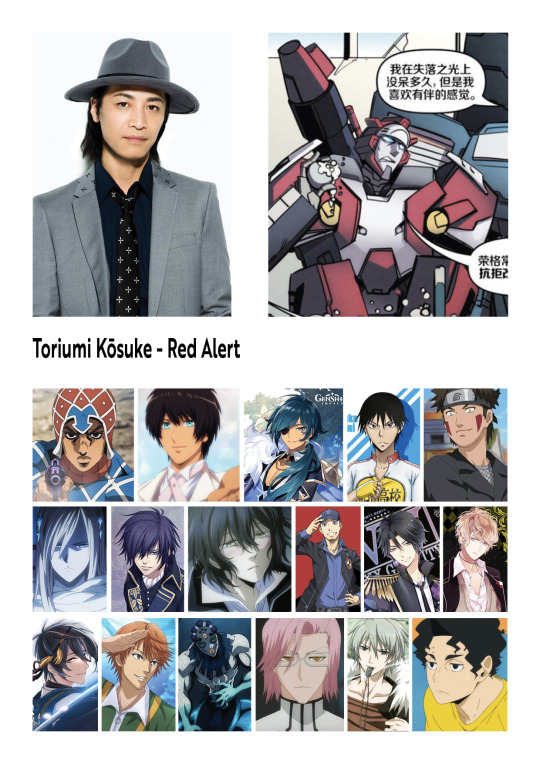

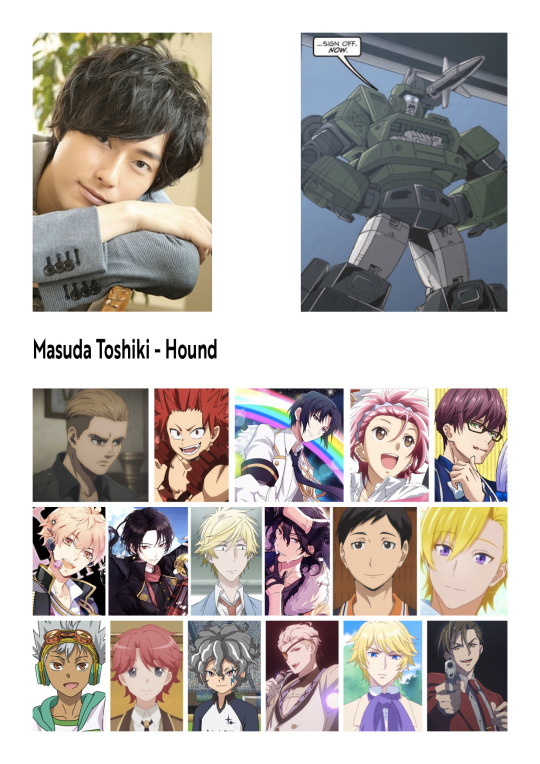
My SEIYUU FAN CAST for Transformers characters (Part 1)
Seiyuus like Genda & Kimura dubbed TF characters in Japanese before, so I decided to make a list of seiyuus who will fit to voice the characters! I also included notable anime/game roles done by each seiyuu
#transformers#idw transformers#idw tf#seiyuus#seiyuu#fan cast#anime#genda tessho#kimura ryohei#nakamura yuichi#ono daisuke#ueda yoji#hatano wataru#toyonaga toshiyuki#terashima takuma#kishio daisuke#takagi wataru#hatanaka tasuku#uchiyama kouki#furukawa makoto#hayami sho#maeno tomoaki#tachibana shinnosuke#shirai yusuke#ito setsuo#toriumi kousuke#okiayu ryoutarou#masuda toshiki
26 notes
·
View notes
Text
I love everything about anime sagwan! they animated and designed him so well. the way he moves feels so fitting for an animal that spent most of his life in the sea, when he walks he looks like he's floating. his japanese voice actor, tessho genda has done a phenomenal job and along with sagwan's soundtrack, it all ties together perfectly, bringing this character to life in a way that makes me so happy <33
#def my favorite out of all new characters that were adapted for anime#also he looks so squishy and adorable UGH#the va is also the voice of kaido and kurama wow#beastars#sagwan
40 notes
·
View notes
Text
An Abbreviated History of Mecha Part 2: AWAKEN! SUPER ROBOT!!! (1970-1979)

(Read in the voice of Tessho Genda) ITS NAME IS.... MAZINGER.... Z!!!!!!!!!
Welcome back to An Abbreviated History of Mecha. Last time, we covered the origins of mecha by highlighting some of the major works of the time including Godzilla and Ultraman, which are not really mecha but are just as influential to the genre as the other shows mentioned.
Today, we will be moving on to the 70's. Here we will see three extremely iconic entries to the canon make their grand entrances, known to Super Robot Wars fans as the Holy Trinity. We'll also see a lot of the classic mecha tropes become codified with a lot of these entries. So, let's MAZIIIN GO!
Kamen Rider (1971)

Kamen Rider is the second iconic series created by mangaka Shotaro Ishinomori and would be part of the reason why henshin heroes (that is, heroes who transform) would become so popular. More importantly, Kamen Rider would give us one of the most homaged attacks of all time: the Rider Kick! And in case you're wondering, yes, Ishinomori still has one more series worth mentioning.
Kamen Rider, alongside Godzilla and Ultraman, got a 2023 retelling in the form of Shin Kamen Rider, courtesy of Hideaki Anno.
Mazinger Z (1973)

Mazinger Z is one of the many iconic series created by legendary mangaka Go Nagai. If Tetsujin 28 was the original "super robot", Mazinger Z would be the series that would introduce a lot of the tropes now commonly associated with a lot of giant robot anime, including but not limited to:
A robot that has to be piloted from the inside
A chest blaster
Laser eyes
Hot-blooded pilots
The term "super robot"
And most important of all, the rocket punch
Let's just say that there's a good reason why Mazinger Z (and this is just Mazinger Z) is the first of the three pillars of the Holy Trinity. Mazinger also has, in terms of sequels and adaptations:
Great Mazinger
UFO Robot Grendizer
Mazinkaiser
Shin Mazinger Z/Mazinger Edition Z: The Impact
Mazinger Z Infinity
Getter Robo (1974)

Created by Ken Ishikawa with help from Go Nagai, Getter Robo would be the second pillar of the Holy Trinity alongside Mazinger Z. Getter Robo would be important for introducing concepts such as a robot piloted by multiple people and, more importantly, Getter Robo would also introduce us to the combining robot, which is why it requires multiple pilots to man.
Getter Robo would get multiple sequels and spinoffs including, but not limited to:
Getter Robo G
Getter Robo Go
Shin Getter Robo Armageddon!
Shin Getter Robo vs Getter Robo Go
New Getter Robo (not to be confused with Shin Getter Robo)
Getter Robo Devolution
Eventually Ken Ishikawa would pass away before he could wrap up the series with Getter Robo Arc. I will come back to Getter Robo at some point in this series though, but to give you a hint: the series does get a conclusion.
I think I'd also be mistaken not to link to Cheese GX's excellent video retrospective on Getter Robo.
Super Sentai (1975)
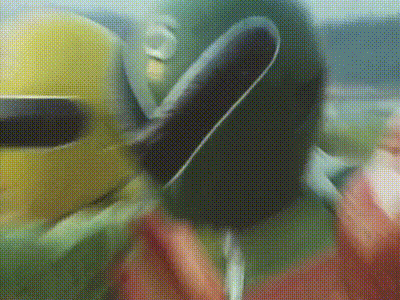
Because Shotaro Ishinomori wasn't content with creating two iconic series, he went ahead and made a third: Super Sentai. That's right: Ishinomori created the two most iconic versions of the henshin hero. Super Sentai is worth mentioning here due to the fact that the series would eventually start adding giant robots into the mix. This series would also eventually attract the attention of one Haim Saban, but that's a story for another day.
Microman/Microbots (1974)
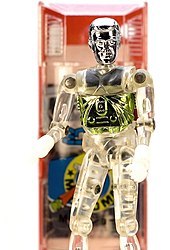
Microman (the toy, not the wrestler) was a line of, and I'm not joking when I say this, "Tiny Little Guys" released in 1975 by the toy company Takara. I'm not super familiar with Microman, but I feel it is important to mention Microman here to understand that one of the biggest names in mecha is descended from this line of toys, as it would start out as a spinoff of microman. Something about transforming vehicles the micromen could pilot. Who could know?
Also fun fact, there's a wrestler named Microman.
Brave Raideen (1975)

(We'll have to settle with this clip from Super Robot Wars)
Brave Raideen is a series created by Studio Sunrise and is one of the first giant robots that is considered to be supernatural in origin. Raideen is important in the history of mecha as it is where two important figures would come into play: Yoshiyuki Tomino and Tadao Nagahama. While it is largely overshadowed by other bigger series, Raideen is still important due to it being the first stepping stone for those two directors alone.
Space Battleship Yamato/Star Blazers (1975)

Up next is Leiji Matsumoto's legendary Space Battleship Yamato. This series would be one of those watershed moments in anime history as Yamato would prove that there was, in fact, an audience who wanted more serious war stories. To say that this series isn't that influential would be a mistake, as we will soon see.
Space Battleship Yamato would eventually receive multiple adaptations, including a live-action film and an anime reboot in the new millennium. The success of Yamato would also help pave the way for other Leiji Matsumoto works like Space Pirate Captain Harlock and the Galaxy Railway 999.
The Robot Romance Trilogy (1976-1979)

(Pictured above: Voltes V)
The Robot Romance Trilogy is a thematic trilogy created by Toei and directed by Tadao Nagahama. These series would include:
Super Electromagnetic Robot Combattler V (V as in the letter)
Super Electromagnetic Robot Voltes V (V as in the number)
Fighting General Daimos
The Robot Romance Trilogy is known for building off of the innovations of its peers. Whereas Getter Robo combined by smashing three jets together (and thus was hard to translate into a toy), Combattler V was designed in a way where the parts of the robots actually made sense when combining to form the robot. This also doesn't even touch on the fact this trilogy would also help to popularize things like the five man band (alongside Super Sentai), mecha shows having more serious storylines with melodrama, and funnily enough, the motion capture mecha (specifically Daimos).
Voltes V is also extremely popular in the Philippines. While this isn't unheard of at this time, Voltes V was different in that it was banned from airing on television by the Marcos regime. Speculation behind its ban may be that its themes were similar to the plight of the Filipino people under Marcos, so you could say that Voltes V in particular is a symbol of rebellion in the Philippines. Heck, it was so popular that there now exists a live action Voltes V series filmed in the Philippines.
Zambot 3 & Daitarn 3 (1977 & 1978)

(Pictured above: Zambot 3)
Meanwhile, Yoshiyuki Tomino would continue to push boundaries as he got more into the groove of directing. On top of producing Voltes V (according to Wikipedia), Tomino would work on a few more series before the end of this decade. The first two would help to establish a pattern with Tomino's works, where he would follow up a more serious and depressing series with something more lighthearted and silly. Zambot 3 would help Tomino earn his nickname "Kill 'Em All Tomino," while Daitarn 3 would also show that he knew how to relax when working on a series. Both Zambot 3 and Daitarn 3 were big hits, but the next series would forever cement Tomino as a legendary figure in the world of anime and manga.
Mobile Suit Gundam (1979)

Mobile Suit Gundam, the final pillar of the Holy Trinity, is arguably Yoshiyuki Tomino and Sunrise's single most important series date. Arguably the single most famous mecha of all time, Gundam would be the first giant robot to be treated less as a hero and more as a tool of war, and it would be Gundam who would kick off a new generation of mecha stories that focused more on things like war and how it affects the lives of the characters in these stories. Which is funny, because Gundam was initially a flop at first. Over time, the series would eventually become a hit thanks to its compilation movies as well as the sale of its models and, most important of all, its female fans.
Mobile Suit Gundam would also be a watershed moment in animation history, as it would be the introduction to a lot of people who would also become famous thanks in part to this series. This includes people who worked on the show like Yasuhiko Yoshikazu (the character designer), Kunio Okawara (mechanical designer, and arguably the first credited mechanical designer), and Ichiro Itano (animator, the same man who Itano Circus is named after). Gundam would also be a direct inspiration for one Ryousuke Takahashi, who would begin to really push the boundary for what one could do with military mecha shows.
Conclusion
I hope this was an enjoyable read. Next time, we'll be getting into the 80's, where we will begin to see a lot of series pop up as Japan's economy grows at an exponential rate. We'll also see how these giant machines will come to influence people outside of Japan on top of how they build off of the themes present in the first Gundam.
Will you survive?
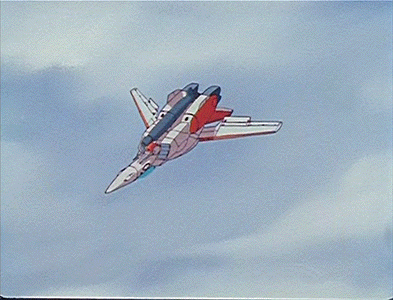
#anime and manga#mecha#an abbreviated history of mecha#mazinger z#getter robo#robot romance trilogy#combattler v#brave raideen#zambot 3#daitarn 3#voltes v#daimos#space battleship yamato#mobile suit gundam#kamen rider#super sentai#microbots#microman#the toy not the wrestler
22 notes
·
View notes
Text
One Piece (1999) ワンピース




Directed: Uda Kinnosuke / Shimizu Junji / Sakai Munehisa / Miyamoto / Hiroaki Shigeyasu Chomine Tatsuya / Yamauchi / Otsuka Takashi / Yasuyukio Screenwriter: Eiichiro Oda / Junki Takegami Mitsuru / Yoshiyuki / Tsuyoshi Shimada / Suga Sakurai / Takahashi Yoichi / Yushi Hashimoto / Ryota Yamaguchi / Isao Murayama / Hitoshi Tanaka Tomohiro / Nakayama / Naoki Koga / Hirohiko Uesaka / Takuya Masumoto / Atsuhiro Tomioka / Masaji Yonemura Starring: Mayumi Tanaka / Akemi Okamura / Kazuya Nakai / Katsuhei Yamaguchi / Hiroaki Hirata / Ikue Otani / Yuriko Yamaguchi / Kazuki Yao / Yuichi Nagashima / Shuichi Ikeda / Toshio Furukawa / Toru Furuya / Norio Otsuka / Masatane Tsukayama / Takeshi Kusao / Masato Oba / Katsuhisa Takagi / Keiichi Sonobe / Hidekatsu Shibata / Hiroshi Naka / Daisuke Sakaguchi / Junko Takeuchi / Shigeru Chiba / Kotono Mitsuishi / Hirohiko Kakugawa / Hideyuki Hori / Hideyuki Tanaka / Ryuzaburo Otomo / Kintaka Arimoto / Akio Otsuka / Tessho Genda / Mami Koyama / Mika Doi / Junko Noda / Misa Watanabe / Nogami Yuukana / Hayashibara Emi / Mizuki Nana / Sonozaki Mie / Nishihara Kumiko / Hisakawa Aya / Sawashiro Miyuki / Ikezawa Haruna / Saito Chiwa / Kamiya Hiroshi / Namikawa Daisuke / Morikubo Shoutarou / Ishida Akira / Takagi Kiyoshi / Hiyama Nobuyuki / Koyasu Takehito / Seki Tomokazu Genre: Comedy / Action / Animation / Fantasy / Adventure Official website: www.toei-anim.co.jp/tv/onep/ Country/Region of Production: Japan Language: Japanese Date: 1999-10-20 (Japan) Number of Seasons: 21 Number of episodes: 1,122 Single episode length: 24 minutes Number of Movies: 39 Movies Number of Games: 57 Games Also known as: 航海王 IMDb: tt0388629 Type: Appropriation
Summary:
Before his death, the legendary pirate Gol D. Roger left a message about his life's wealth "One Piece", which attracted many heroes to fight for this legendary huge wealth. Various forces and regimes kept changing, and the whole world entered the turbulent and chaotic "Great Pirate Era". Luffy, who grew up in a small village in the East China Sea, was guided by the spirit of the pirate Shanks and decided to become an outstanding pirate. In order to achieve this goal and find the much-anticipated One Piece, Luffy embarked on a difficult journey. Along the way, he encountered countless hardships and met a group of friends with different personalities, such as Zoro, Nami, Usopp, Sanji, and Robin. They joined hands to embark on a legendary adventure... This film is adapted from the popular manga "One Piece" by Japanese manga artist Eiichiro Oda.
Source: https://en.wikipedia.org/wiki/One_Piece_(1999_TV_series)
Link: https://kissanime.com.ru/Anime/One-Piece.57500/
#One Piece#ワンピース#jttw media#jttw television#television#animation#appropriation#inspiration#sun wukong#sun wukong inspiration
3 notes
·
View notes
Text
I love that Tessho Genda has one of the most iconic filmographies in all of anime voice acting (from Optimus Prime and Toguro to Kaido from One Piece) but because of Ultraman i will always largely associate him with Yapool.
4 notes
·
View notes
Note
If Godzilla could speak, what would he sound like? I can see him with a deep, booming, bellowing voice - it's only fitting for the King of the Monsters, no?
Just thinking for Legendary Godzilla
In English, I'm on the Keith David as Godzilla train
In Japanese, I'm thinking Tessho Genda would be the best choice
Especially when he voices Optimus Prime, but I can't find a good clip of that
#*ooc#*Godzilla#I might think up some others for different versions of Godzilla#Cause Shin might be more of a high-pitched sorta voice in my head#and all of that
4 notes
·
View notes
Text

⚠️😞LAMENTABLEMENTE, GENDA TESSHO, SEIYU DE KAIDO HA SIDO REEMPLAZADO POR PROBLEMAS DE SALUD😞⚠️
POR LO TANTO NO PODRÁ PARTICIPAR EN EL PASADO DE KUMA!!! EN EL INCIDENTE DE GOD VALLEY.
2 notes
·
View notes
Text
#ck rambles#tokumei sentai go busters#go busters#super sentai#sentai#this being a doo wop/bluesy funk track is so funny#like i can absolutely picture ryuuji and gorisaki singing this at karaoke and everyone calling them old and cringe
4 notes
·
View notes
Text
(Shout out to Tessho Genda for his diabolocal performance as Op). Tessho Genda did a Christopher Daniel Barnes' Spider Tas voice acting (ahem 'Shocker!' scene) level of voice acting in G1 Japanese Dub and i freaking love it!! 😂
0 notes
Text
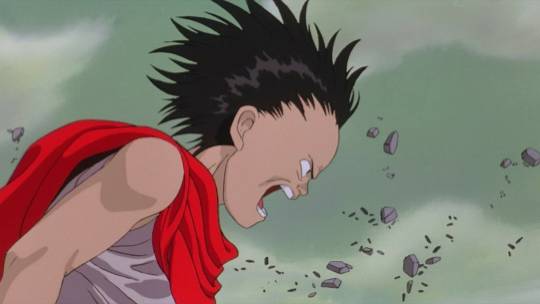
Akira (Katsuhiro Otomo, 1988)
Cast: Voices of Mitsuo Iwata, Nozomu Sasaki, Mami Koyama, Taro Ishida, Tessho Genda, Mizuho Susuki, Tatsuhiko Nakamura, Fukue Ito, Kazuhiro Shindo, Yuriko Fuchizaki, Masaaki Okura, Takeshi Kusao, Hiroshi Otake. Screenplay: Katsuhiro Otomo, Izo Hashimoto, based on a manga by Otomo. Cinematography: Katsuji Misawa. Production design: Kazuo Ebisawa, Yuji Ikehata, Hiroshi Ono. Film editing: Takeshi Seyama. Music: Shoji Yamashiro.
1 note
·
View note
Text
Conoce las torturas de "`Tis Time for “Torture,” Princess" en el nuevo avance
Se anunció un nuevo video de avance, imágenes clave y miembros del elenco de `Tis Time for “Torture”, Princess, un próximo anime basado en el manga de comedia de fantasía del mismo nombre. El nuevo trailer confirma que la serie se transmitirá en Japón a partir de enero de 2024. El miembro del reparto recientemente anunciado incluye al Rey Demonio (en la foto de abajo), con la voz de Tessho Genda…

View On WordPress
0 notes
Text
My sister who's in college has this anime for studying in her syllabus!
The question that appeared in her test -
1. WHAT IS MANGA? 😍
I love this world ❤️ the university, the college ❤️ please by the time I get there please include mairuma in the syllabus. I'm so proud our university recognised this anime and manga. It's an achievement for us, the manga and the anime team including our beloved seiyuus.
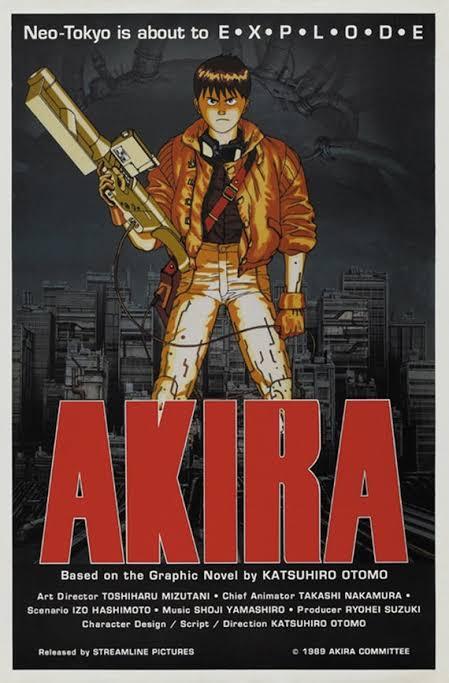
The seiyuus are familiar! Mitsuo iwata who plays the role of Kaneda is Suzaku in Inuyasha and Arystrar krory in D gray man. Nozomu sazaki who's shima also played Yusuke in yu yu hakusho and mello in death note. Tessho Ganda (Ryusaku Ryu) also played Kurama in Naruto! Finally Takeshi kusao (Kai) played Bankotsu in Inuyasha.
#akira#katsuhiro otomo#manga#classic anime#takeshi kusao#mitsuo iwata#nozomu sasaki#tessho genda#seiyuu#naruto#kurama#yu yu hakusho#Inuyasha#Bankotsu#suzaku#Suzaku of the flower#d gray man#Arystrar krory
37 notes
·
View notes
Text
Who I think should be I the Mario Movie’s Japanese dub
Mario: Jun Fukuyama, Hiroshi Kamiya, Mamoru Miyano, Yuichi Nakamura or Satoshi Hino (Considering Mario won’t have his voice/accent and will be played by a regular sounding guy like Pratt, any these would work for him)
Peach: Saori Hayami (like cmon, She’s perfect for Peach)
Luigi: Hiro Shimono (He’d make an amazing Luigi, given that he’s Zenitsu he’d make the perfect Japanese equivalent to Charlie)
Bowser: Tetsu Inada or Tessho Genda or Kazuya Nakai
Toad: Kappei Yamaguchi
Donkey Kong: Kenta Miyake or Koichi Yamadera (Who played him in the JP dub of Donkey Kong Country)
#thad says something#thad has an opinion#japanese voice actors#seiyuu#mario movie 2022#jun fukuyama#mamoru miyano#yuichi nakamura#kamiya hiroshi#satoshi hino#saori hayami#hiro shimono#tetsu inada#tessho genda#kazuya nakai#kappei yamaguchi#kenta miyake#koichi yamadera
4 notes
·
View notes